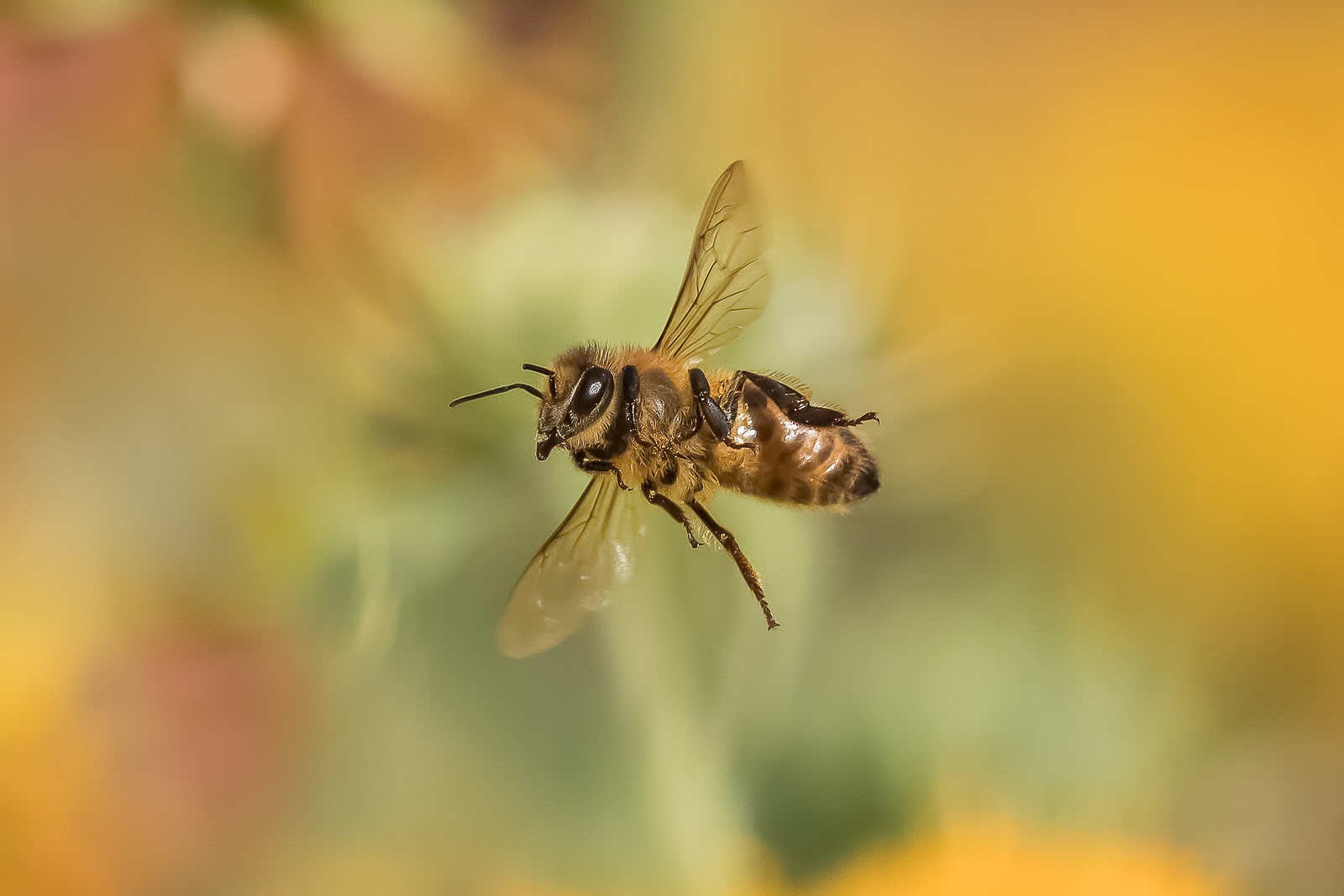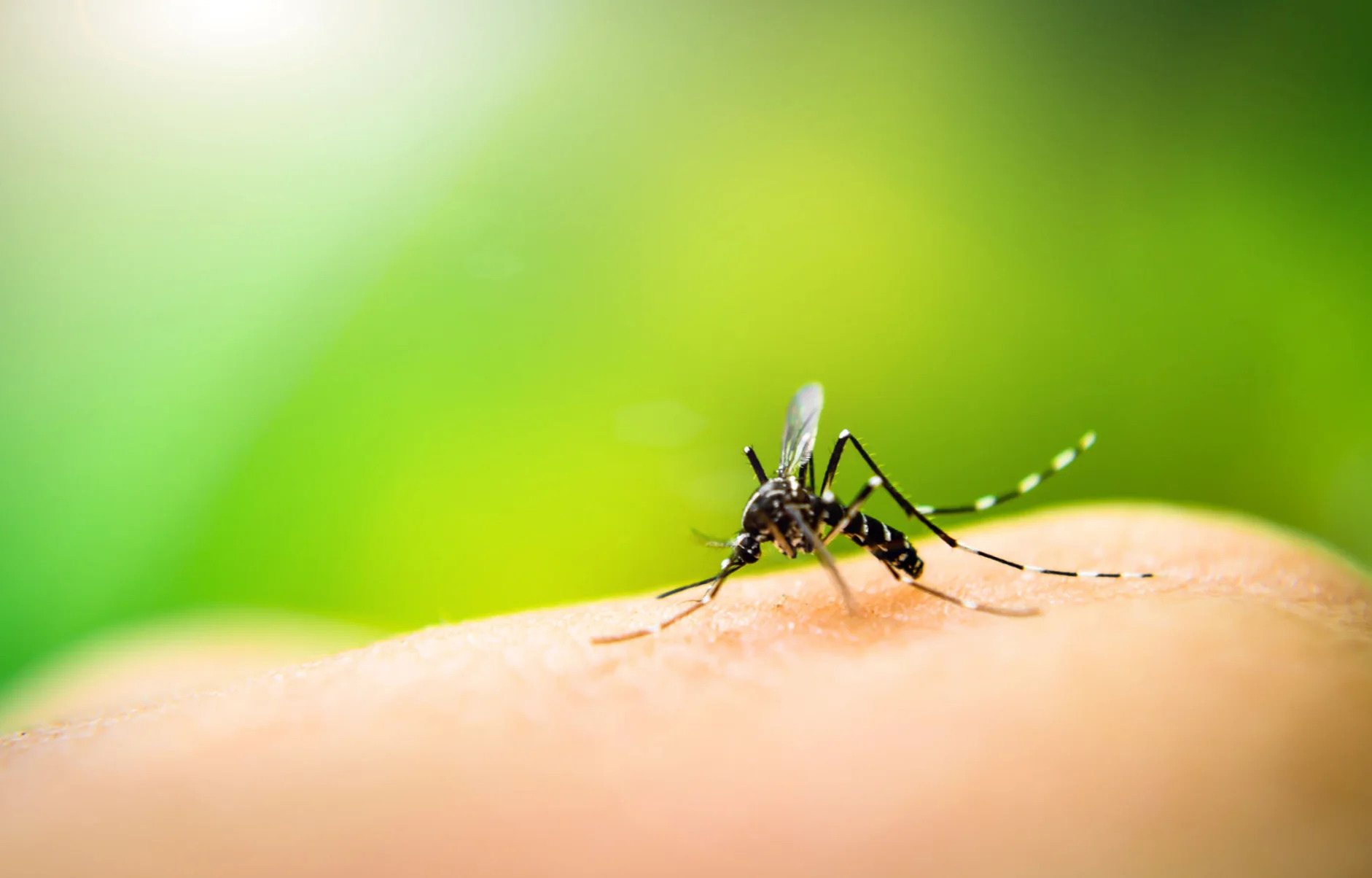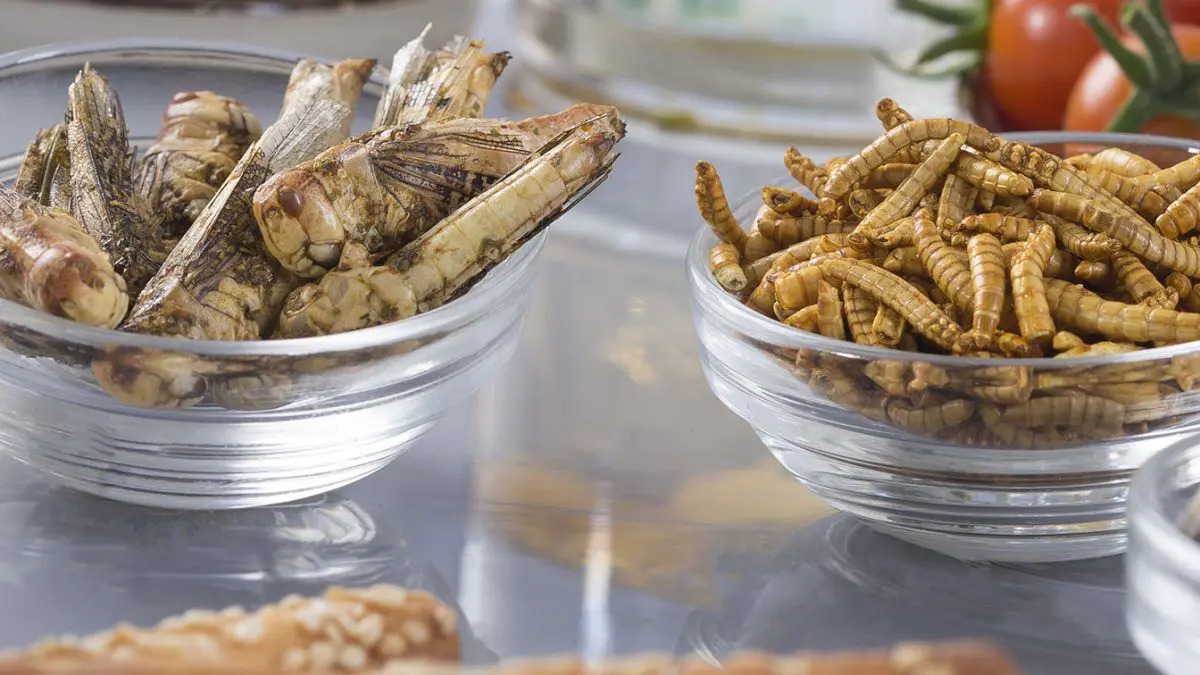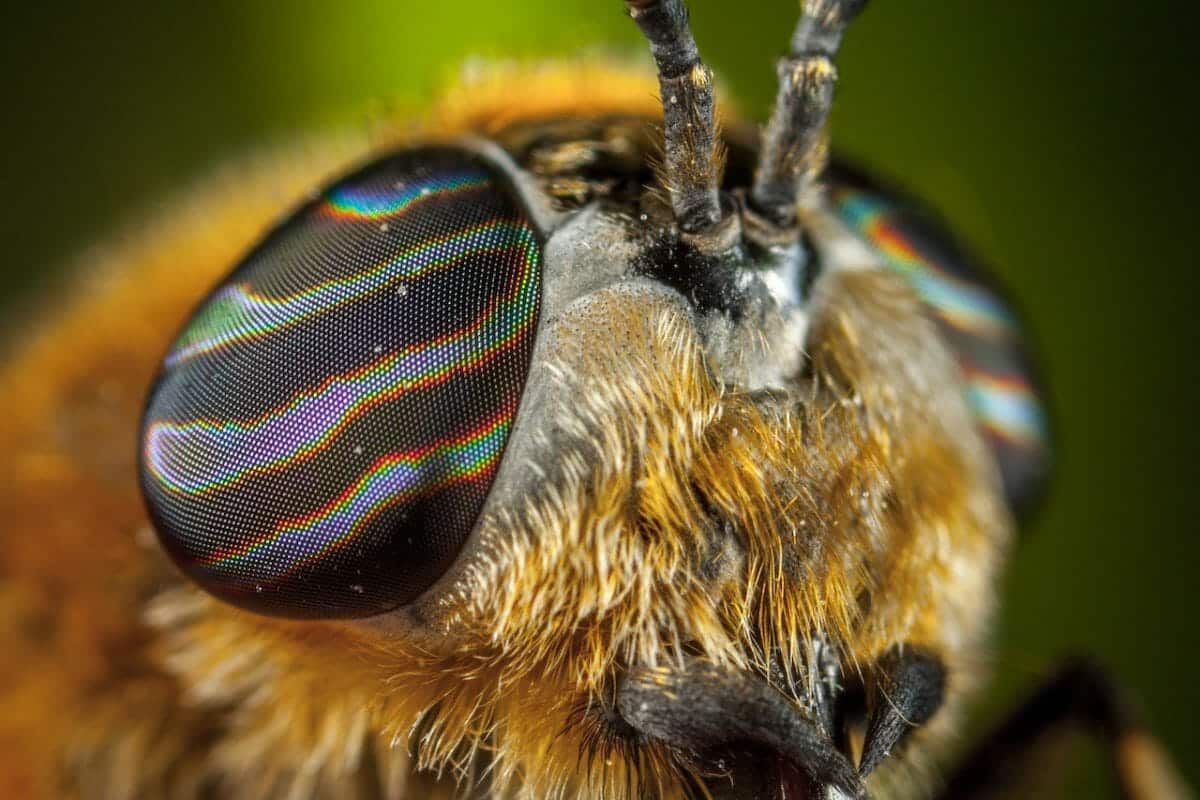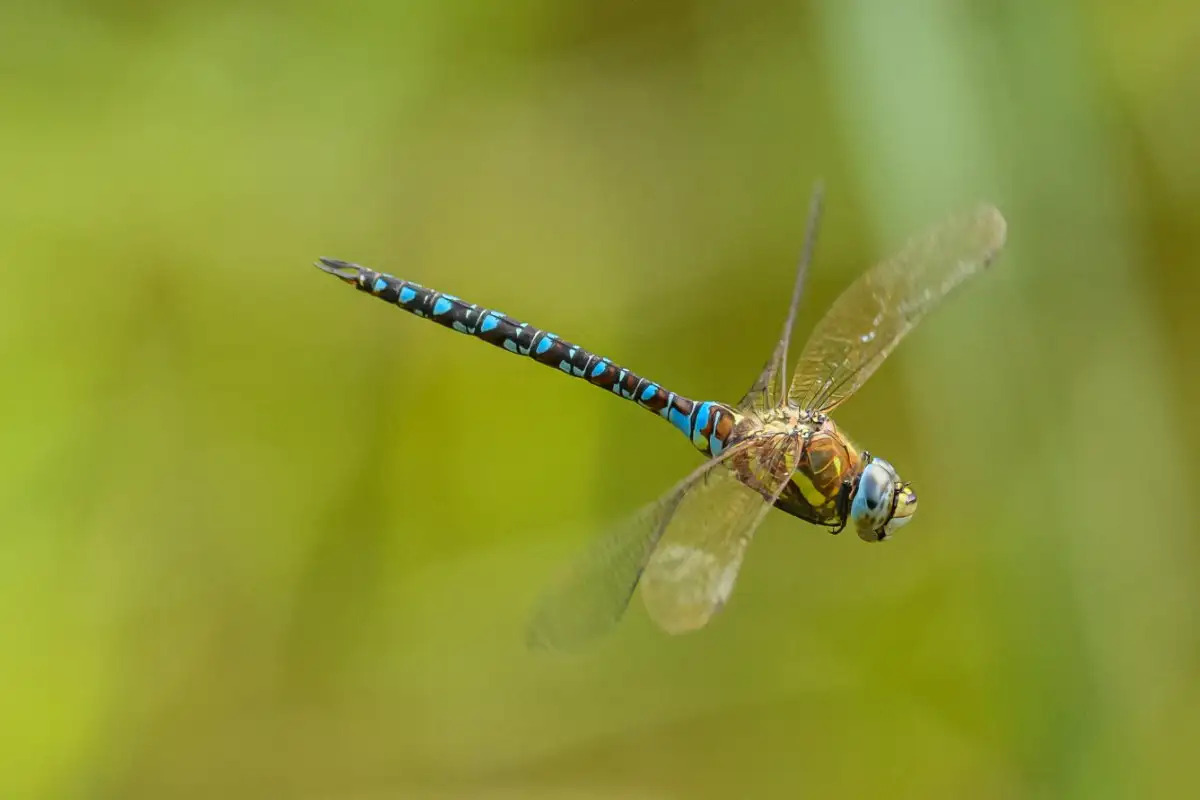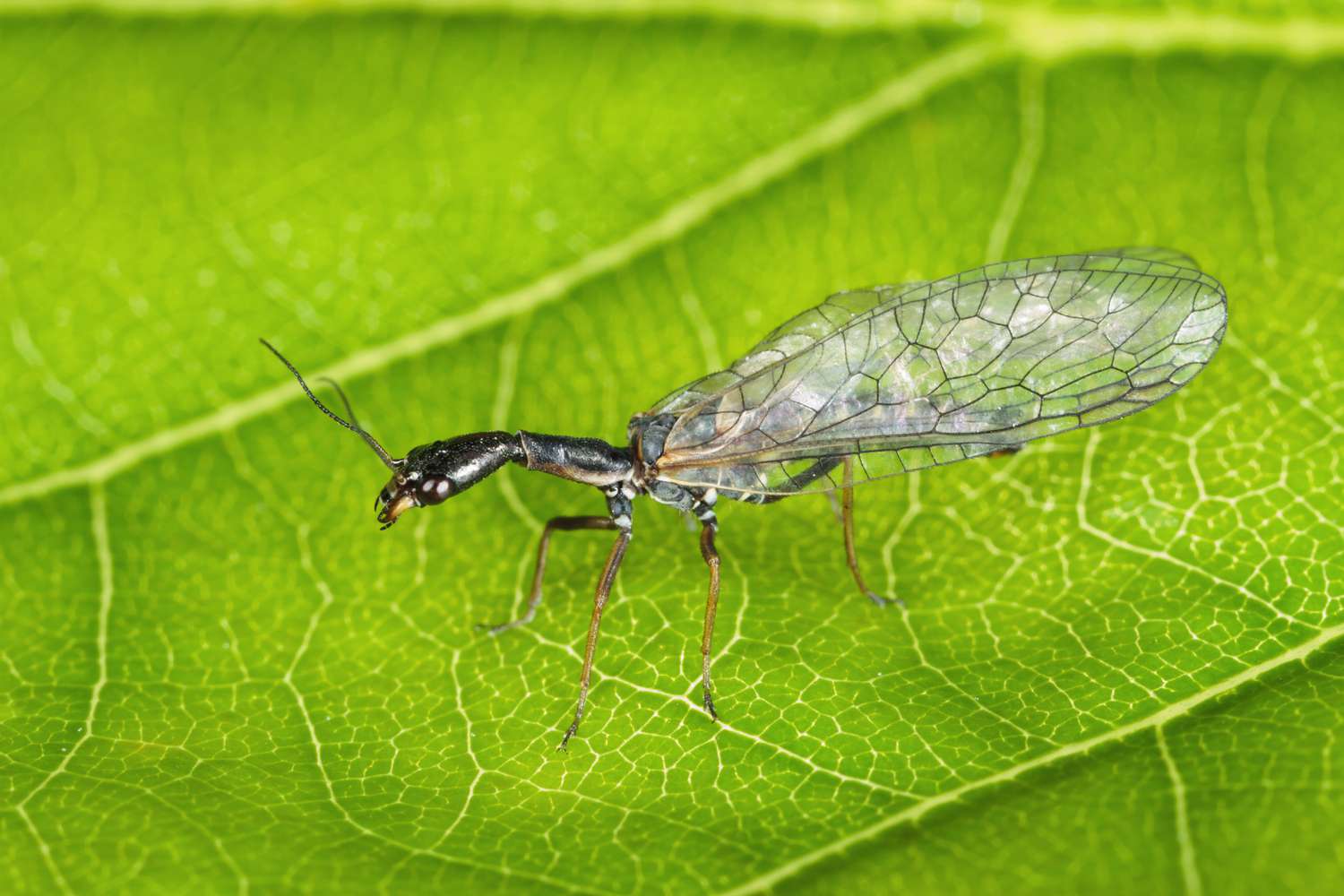Home>Gardening Tips and Tricks>Problem Solving>How To Eliminate Insects With Aerosol
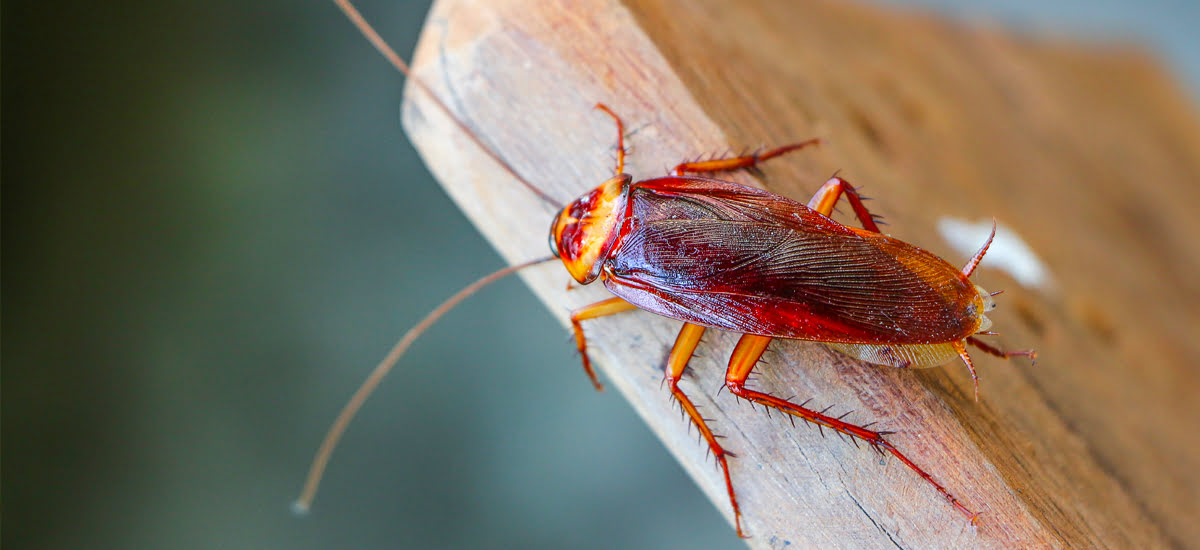

Problem Solving
How To Eliminate Insects With Aerosol
Modified: January 22, 2024
Solve your insect problem with our effective aerosol spray. Eliminate insects quickly and safely with our proven solution. Stop pests in their tracks.
(Many of the links in this article redirect to a specific reviewed product. Your purchase of these products through affiliate links helps to generate commission for Chicagolandgardening.com, at no extra cost. Learn more)
Table of Contents
- Introduction
- Understanding Aerosol Insecticides
- Identifying Common Insects
- The Importance of Proper Application
- Safety Precautions
- Step 1: Prepare the Area
- Step 2: Choose the Right Aerosol Insecticide
- Step 3: Read and Follow Instructions
- Step 4: Apply the Aerosol Insecticide
- Step 5: Monitor and Repeat as Necessary
- Conclusion
Introduction
Welcome to the ultimate guide on how to eliminate insects with aerosol insecticides. If you’ve ever dealt with pesky insects invading your home or outdoor spaces, you know how frustrating it can be. From annoying flies buzzing around to sneaky ants marching in line, these unwelcome guests can disrupt your peace and cause sanitation issues.
Fortunately, aerosol insecticides are a powerful tool that can help you regain control and create a bug-free environment. Aerosol insecticides come in convenient spray cans and are formulated to effectively kill and repel a wide range of common insects.
In this comprehensive guide, we will walk you through the process of using aerosol insecticides to eliminate insects. You will learn about different types of aerosol insecticides, how to identify common insects, the importance of proper application, and safety precautions to keep in mind.
By following the steps outlined in this guide, you’ll be able to tackle insect infestations head-on and reclaim your space from these unwelcome guests. So let’s dive in and get started!
Understanding Aerosol Insecticides
Aerosol insecticides are a type of pesticide that come in pressurized cans and are designed to kill or repel insects. They are formulated with active ingredients that target specific pests, making them highly effective for insect control. These insecticides work by releasing a fine mist or spray that can reach areas where insects hide, such as cracks, crevices, and corners.
One of the key advantages of aerosol insecticides is their ease of use. The spray cans are designed to be portable and convenient, allowing you to target insects wherever they may be. The pressurized cans also provide a controlled release of the insecticide, ensuring precise application and minimal wastage.
When selecting an aerosol insecticide, it’s important to consider the specific type of insects you are dealing with. Different aerosol insecticides are formulated to target specific pests, such as mosquitoes, flies, ants, cockroaches, or spiders. By identifying the type of insect you’re dealing with, you can choose an insecticide that is most suitable for effective elimination.
Some aerosol insecticides provide immediate knockdown of insects upon contact, while others may have residual effects, helping to prevent reinfestation for a certain period of time. It’s crucial to read the product labels and understand the duration and efficacy of the insecticide to ensure you address the insect problem effectively.
When using aerosol insecticides, it’s essential to follow the instructions provided. This includes wearing protective clothing, such as gloves and a mask, to avoid direct contact with the insecticide. Additionally, it’s important to consider the environmental impact of aerosol insecticides and choose products that are safe for use around children, pets, and plants.
In the next section, we will discuss how to identify common insects and determine the appropriate aerosol insecticide for each type of pest. Armed with this knowledge, you’ll be able to select the right insecticide to combat insect infestations effectively.
Identifying Common Insects
Before using aerosol insecticides to eliminate insects, it’s important to properly identify the type of insects you are dealing with. Different insects have different habits, behaviors, and vulnerabilities, so selecting the right insecticide is crucial for effective pest control.
Here are some common insects you may encounter and how to identify them:
- Flies: Flies are small, flying insects with two pairs of wings. They are attracted to food, waste, and unsanitary conditions. Common types of flies include house flies, fruit flies, and blowflies. They can be a nuisance and carry disease-causing bacteria.
- Ants: Ants are small insects that live in colonies and are known for their organized behavior. They can be found both indoors and outdoors. Common types of ants include carpenter ants, which can cause structural damage, and sugar ants, which are attracted to sweet food.
- Cockroaches: Cockroaches are resilient insects with a flat body and long antennae. They prefer warm and humid environments and can be found hiding in dark corners and crevices. Cockroach infestations can pose health risks as they carry diseases and trigger allergies.
- Spiders: Spiders are eight-legged creatures that build webs to catch their prey. While most spiders are harmless, some venomous species, like black widows and brown recluses, can be dangerous. Spiders are often found in dark, undisturbed areas.
- Mosquitoes: Mosquitoes are small flying insects known for their itchy bites. They require stagnant water to breed and are active during warm months. Mosquitoes can transmit diseases such as dengue fever, Zika virus, and West Nile virus.
- Bed Bugs: Bed bugs are reddish-brown insects that live in mattresses, furniture, and cracks. They feed on human blood and can cause itchy bites and sleep disturbances. Bed bug infestations require thorough treatment to eliminate.
By correctly identifying the type of insects infesting your space, you can select the appropriate aerosol insecticide that targets their specific vulnerabilities and behaviors. This will increase the chances of successful elimination and prevent future infestations.
In the next section, we will explore the importance of proper application techniques when using aerosol insecticides. Understanding how to apply the insecticide correctly will ensure maximum effectiveness and minimize any potential risks.
The Importance of Proper Application
When it comes to using aerosol insecticides, proper application is essential for achieving effective insect control. Applying the insecticide correctly ensures maximum coverage and targeted treatment, increasing the chances of eliminating the insects successfully.
Here are a few reasons why proper application is crucial:
- Maximizing Effectiveness: Proper application techniques help to ensure that the aerosol insecticide reaches the target areas where insects reside. Whether it’s cracks, crevices, or hidden corners, applying the insecticide directly to these areas increases the likelihood of contact with the insects and delivers the best results in eliminating them.
- Minimizing Health Risks: Following the instructions and guidelines provided on the insecticide label reduces the risk of exposure to harmful chemicals. It’s important to wear appropriate protective gear, such as gloves and a mask, to prevent direct contact with the insecticide. Additionally, applying the insecticide in well-ventilated areas helps to minimize inhalation of fumes.
- Preventing Residual Contamination: Aerosol insecticides, especially those with residual effects, can leave a residue on surfaces. Proper application techniques ensure that the insecticide is applied only in the intended areas, preventing unnecessary contamination of other surfaces, food, or water sources.
- Targeting Specific Insects: Different insects have different habits and vulnerabilities. Proper application of the insecticide allows for targeted treatment, addressing the specific insect problem at hand. By understanding the behavior and nesting areas of the insects, you can direct the aerosol spray to those locations for maximum impact.
- Ensuring Long-Term Results: By applying the insecticide according to the recommended frequency and dosage, you can achieve longer-lasting results. Some insects may require repeat treatments to completely eradicate the infestation. Following the application guidelines will help maintain insect-free spaces over time.
By prioritizing proper application techniques, you can optimize the effectiveness of aerosol insecticides and achieve the best possible results in your efforts to eliminate insects. Next, we will discuss essential safety precautions to keep in mind when using aerosol insecticides.
Safety Precautions
Using aerosol insecticides to eliminate insects requires careful consideration of safety precautions to protect yourself, others, and the environment. While aerosol insecticides are generally safe when used as directed, it’s important to follow these safety guidelines:
- Read the Label: Carefully read and understand the instructions, warnings, and precautions provided on the label of the aerosol insecticide. Take note of any specific safety measures or protective equipment recommended by the manufacturer.
- Protective Clothing: Wear appropriate protective clothing, such as gloves and a mask, to minimize direct contact with the insecticide. This protects your skin, eyes, and respiratory system from potential irritants or harmful chemicals.
- Ventilation: Apply the aerosol insecticide in well-ventilated areas to avoid inhaling fumes. Open windows or use fans to ensure proper air circulation while using the product.
- Avoid Food Contact: Keep aerosol insecticides away from food preparation and consumption areas. Ensure that all food items, utensils, and surfaces are covered or removed from the application area before using the insecticide.
- Keep Children and Pets Away: Keep children and pets away from the treated area while applying the insecticide and until it has dried completely. Some insecticides may be harmful if ingested or if there is prolonged exposure.
- Store Properly: Store the aerosol insecticide in a cool, dry place, away from direct sunlight and extreme temperatures. Follow any specific instructions on proper storage to maintain its efficacy and minimize potential risks.
- Proper Disposal: Dispose of empty aerosol cans or unused insecticide properly according to local regulations. Do not puncture or incinerate the cans, as they may pose a fire hazard.
- Consider Environmental Impact: Choose aerosol insecticides that are labeled as safe for use around children, pets, and plants. Consider using natural or organic alternatives if you have concerns about chemical-based insecticides.
By following these safety precautions, you can use aerosol insecticides responsibly and effectively without compromising your safety or the well-being of others and the environment. Now let’s move on to the step-by-step process of eliminating insects with aerosol insecticides.
Step 1: Prepare the Area
Before applying aerosol insecticides to eliminate insects, it’s important to properly prepare the area to ensure maximum effectiveness and safety. By taking a few simple steps to prepare, you can optimize the results of your insect control efforts.
Here’s what you need to do to prepare the area:
- Remove Clutter: Clear away any clutter or debris from the area you will be treating. This includes removing items that may provide hiding places or attract insects, such as piles of leaves, stacks of magazines, or food scraps.
- Clean the Area: Thoroughly clean the surfaces, floors, and furniture in the treatment area. Insects often hide in dirty or dusty areas, so cleaning will help expose their hiding places and improve the effectiveness of the insecticide.
- Seal Entry Points: Inspect the area for any gaps, cracks, or openings where insects can enter. Seal these entry points with caulk or other appropriate materials to prevent insects from coming back after treatment.
- Remove Food Sources: Ensure that all food items are stored in sealed containers or kept in the refrigerator. This helps eliminate attractants that might entice insects and ensures they aren’t exposed to the insecticide during treatment.
- Protect Sensitive Items: If there are any sensitive items, such as electronics or delicate furniture, consider covering them or moving them to a safe location away from the treatment area to avoid any potential damage from the insecticide spray.
- Keep Children and Pets Away: Remove children and pets from the treatment area. If necessary, confine them to a different room or have someone supervise them in another part of the house to ensure they do not come into contact with the insecticide.
By following these preparation steps, you create a clean and optimized environment for the application of aerosol insecticides. This sets the stage for effective insect control in the subsequent steps. Now it’s time to move on to step 2 – choosing the right aerosol insecticide for your specific needs.
Step 2: Choose the Right Aerosol Insecticide
Choosing the right aerosol insecticide is crucial for effective insect control. Different aerosol insecticides are formulated to target specific types of insects, so it’s important to select one that is appropriate for the pests you are dealing with. Here’s how to choose the right aerosol insecticide:
- Identify the Insects: Determine the type of insects that are causing the problem. This can be done by observing their appearance, behavior, and the areas where they are most commonly found.
- Read the Labels: Carefully read the labels and product descriptions of the aerosol insecticides available. Look for ones that specifically target the type of insects you have identified. Pay attention to the active ingredients and their efficacy against the pests.
- Consider Residual Effect: Decide whether you want an insecticide with immediate knockdown or one with residual effect. Insecticides with residual effect can provide longer-lasting protection and prevent reinfestation.
- Understand Safety Precautions: Take note of any safety precautions mentioned on the label, such as protective gear requirements and recommendations for use around children, pets, or plants. Choose an insecticide that aligns with your safety preferences.
- Research Reviews and Recommendations: Look for reviews or recommendations from reputable sources, such as pest control professionals or trusted online platforms. These sources can provide valuable insights and help you make an informed decision.
- Consider Environmental Impact: If environmental sustainability is a concern, choose aerosol insecticides that are labeled as eco-friendly or have minimal impact on non-target organisms.
- Choose the Appropriate Size: Consider the size of the treatment area and the frequency of use. Select an aerosol insecticide that provides enough coverage for your needs without excessive waste.
By carefully considering these factors, you can choose an aerosol insecticide that targets the specific insects you are dealing with and aligns with your safety and environmental preferences. This will enhance the effectiveness of the treatment and ensure successful insect control. Now that you have selected the right aerosol insecticide, let’s move on to step 3 – reading and following the instructions for proper application.
Step 3: Read and Follow Instructions
Once you have chosen the right aerosol insecticide, it’s crucial to read and follow the instructions provided on the product label. Each aerosol insecticide may have specific instructions for application, safety precautions, and dosage. By carefully following these instructions, you can ensure the maximum effectiveness and safety of the insecticide. Here’s what you need to do:
- Read the Label: Start by thoroughly reading the label of the aerosol insecticide. Pay attention to any precautions, warnings, or special instructions mentioned by the manufacturer.
- Protective Gear: Take note of the recommended protective gear, such as gloves, mask, or safety goggles, that need to be worn during application. This helps to minimize exposure to the insecticide.
- Application Areas: Identify the specific areas where the aerosol insecticide should be applied. This may include cracks, crevices, baseboards, or any other areas where insects are likely to hide or frequent.
- Application Technique: Follow the recommended application technique, such as spraying in short bursts or with sweeping motions. This helps to ensure even coverage and maximum effectiveness.
- Proper Dosage: Use the insecticide in the recommended dosage or as instructed on the label. Applying too little may not provide effective control, while using too much could pose unnecessary risks.
- Timing and Frequency: Note any specific instructions regarding the timing and frequency of application. Some insecticides may require multiple treatments or regular reapplication to effectively control the infestation.
- Environmental Considerations: Pay attention to any instructions regarding the safe use of the aerosol insecticide around children, pets, or plants. Follow any guidelines for minimizing potential environmental impact.
- Storage and Disposal: Take note of any instructions for proper storage of the aerosol insecticide after use. Additionally, follow the recommended procedures for the safe disposal of empty aerosol cans or unused product.
By carefully reading and following the instructions provided with the aerosol insecticide, you can ensure the proper and effective application of the product, minimizing any potential risks and maximizing its ability to eliminate the targeted insects. Now that you are familiar with the instructions, let’s move on to step 4 – applying the aerosol insecticide.
Step 4: Apply the Aerosol Insecticide
Now that you have read and understood the instructions for the aerosol insecticide, it’s time to proceed with the application. Applying the insecticide correctly is key to effectively eliminating the insects. Follow these steps to apply the aerosol insecticide:
- Shake the Can: Shake the aerosol insecticide can well before use. This helps to ensure that the contents are properly mixed, providing consistent results.
- Hold the Can Properly: Hold the can upright and at a distance as recommended on the label. This allows for a controlled spray and even distribution of the insecticide.
- Target the Infested Areas: Direct the spray towards the areas identified as infested or prone to insect activity. Focus on cracks, crevices, baseboards, entry points, and any other areas where insects are likely to hide or pass through.
- Apply With Care: Apply the aerosol insecticide using short bursts or sweeping motions. This helps to ensure that the insecticide covers the targeted areas evenly and reaches the pests.
- Avoid Overuse: Do not overapply the insecticide. Use the recommended amount as specified on the label. Overuse may not increase effectiveness and can be wasteful.
- Avoid Food Preparation Surfaces: Be mindful of spraying on or near food preparation surfaces. Ensure that food, utensils, and other items are covered or removed from the treatment area to avoid contamination.
- Do Not Wipe or Clean Immediately: Resist the urge to wipe or clean the sprayed areas immediately. Allow the insecticide to dry and do its job according to the product’s instructions.
- Monitor Results: Observe the treated areas for any signs of insect activity after application. Monitor the effectiveness of the aerosol insecticide and make note of any reoccurrence that may require reapplication.
By following these steps, you can effectively apply the aerosol insecticide and target the areas where the insects are present. This increases the chances of successful elimination and prevents future infestations. Now that you have applied the insecticide, let’s move on to the final step – monitoring and repeating as necessary.
Step 5: Monitor and Repeat as Necessary
After applying the aerosol insecticide, it is important to monitor the treated areas and assess the effectiveness of the treatment. In some cases, a single application may be sufficient to eliminate the insects. However, depending on the severity of the infestation or the type of insects, additional treatments may be required. Here’s what you need to do:
- Monitor Insect Activity: Keep an eye on the treated areas to see if there is a reduction in insect activity. Look for signs of dead or dying insects, decreased sightings, and absence of new infestations.
- Assess the Effectiveness: Evaluate the effectiveness of the aerosol insecticide. If the treated areas remain infested or if you notice a resurgence of insect activity, additional treatments may be necessary.
- Follow the Product’s Guidelines: Refer back to the instructions provided on the aerosol insecticide’s label. The guidelines may specify the appropriate time to repeat the treatment, which could range from a few days to a few weeks.
- Repeat the Application: If needed, repeat the application of the aerosol insecticide following the same steps previously mentioned. Focus on areas where the insects are still active or where reinfestation is likely to occur.
- Maintain Hygiene Practices: In conjunction with the treatments, practice good hygiene habits to discourage future infestations. Keep the area clean, eliminate sources of food and water for insects, and fix any structural issues that may attract and harbor pests.
- Consult a Professional: If the infestation persists despite multiple treatments, consider seeking assistance from a professional pest control service. They can provide expert advice and specialized treatments for persistent or severe infestations.
By monitoring the treated areas and repeating the application as necessary, you can ensure the long-term effectiveness of the aerosol insecticide and maintain a pest-free environment. Remember to follow the instructions and safety precautions throughout the process. With persistence and proper treatment, you can successfully eliminate insects and enjoy a bug-free living space.
Conclusion
Congratulations! You have reached the end of this comprehensive guide on how to eliminate insects with aerosol insecticides. Armed with the knowledge from this guide, you are now equipped to tackle insect infestations and create a bug-free environment in your home or outdoor spaces.
We covered the importance of understanding aerosol insecticides and how to identify common insects to target them effectively. We also emphasized the significance of proper application techniques and highlighted essential safety precautions to ensure the well-being of yourself, others, and the environment.
Remember to thoroughly prepare the area prior to treatment, choose the right aerosol insecticide for the specific insects you are dealing with, and carefully follow the instructions provided by the manufacturer. The correct application techniques, such as directing the spray towards infested areas and ensuring even coverage, will optimize the insecticide’s effectiveness.
Monitoring the treated areas and repeating the application as necessary will help maintain long-term results. Maintaining good hygiene practices and addressing any structural issues that attract insects will also contribute to ongoing pest control efforts.
If you encounter persistent or severe infestations, it may be wise to consult a professional pest control service for specialized treatments and further guidance.
Remember, the key to successful insect control is a combination of knowledge, proper application, and ongoing maintenance. By following the steps outlined in this guide, you can confidently eliminate insects and enjoy a comfortable, pest-free living space.
Now it’s time to put this knowledge into action and say goodbye to those pesky insects once and for all. Happy insect control!
